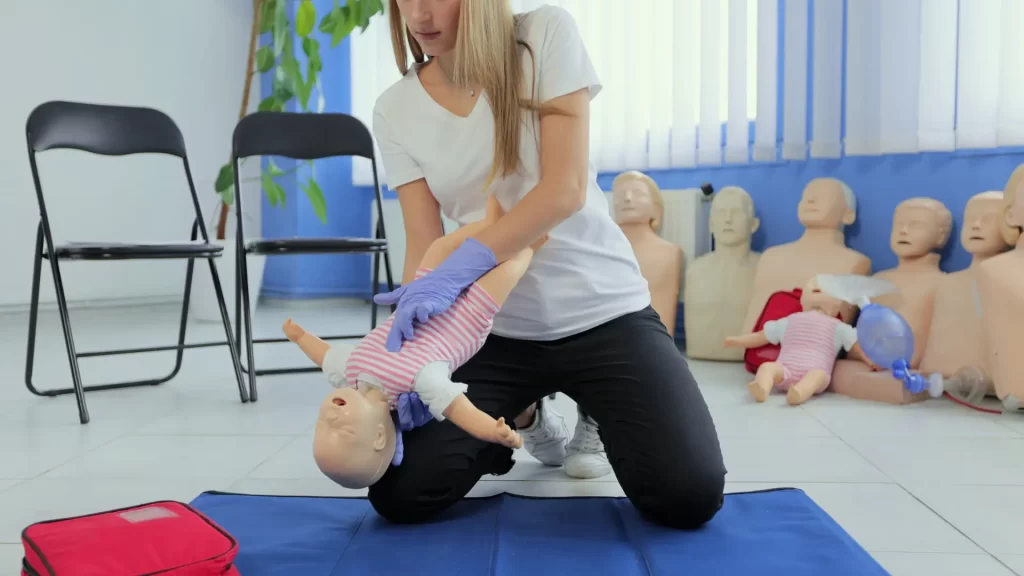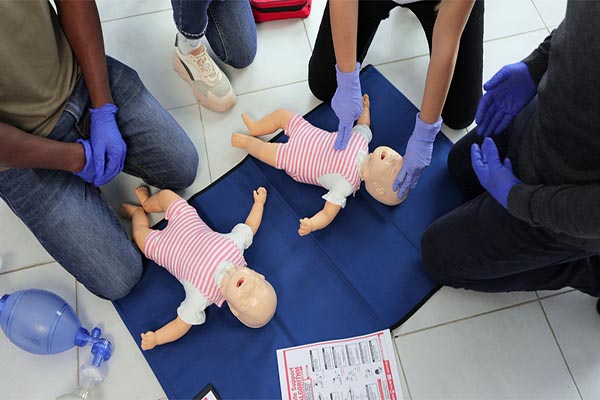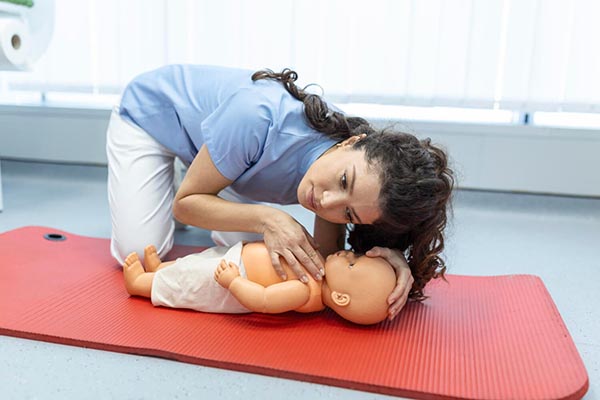
Ensuring the safety and well-being of infants is a paramount concern for every parent and caregiver. The infant stage is a critical period of development where babies are naturally curious and eager to explore their surroundings, often using their mouths as a primary tool for discovery. This innate curiosity, while essential for learning, also exposes them to numerous risks, including choking hazards. Understanding these hazards and knowing how to perform CPR on an infant can make a life-saving difference, allowing caregivers to act swiftly and confidently in critical moments.
In this comprehensive guide, we will delve into the common choking hazards that threaten babies and provide clear, step-by-step guidance on how to perform CPR on an infant. By equipping yourself with this knowledge, you can ensure a safer environment for your child and be prepared to act decisively in emergencies, thereby enhancing your peace of mind and safeguarding the infant’s well-being.
Choking is a leading cause of injury and death among children, especially infants who are naturally curious and tend to explore their world by putting objects in their mouths. This behavior is part of their developmental process but can lead to dangerous situations if not carefully monitored. Here are some common choking hazards:
Small, round, or hard foods can easily become lodged in a baby’s throat, posing significant risks. Some of the most common food choking hazards include:

Beyond food, many everyday items can pose a choking risk to infants. These objects are often overlooked but can be just as dangerous:
Prevention is key when it comes to choking hazards. By taking proactive measures, you can significantly reduce the risk of choking incidents. Here are some tips to keep your baby safe:
Recognizing the signs of choking is crucial to responding effectively. An infant who is choking may display several visible and audible signs that demand immediate attention. Here is what you should look for:
If you suspect your child is choking and they are unable to cough effectively, it’s time to act quickly. Swift intervention can prevent severe outcomes and save your child’s life.

Infant CPR (Cardiopulmonary Resuscitation) is a life-saving technique used in emergencies when a baby is not breathing or their heart has stopped beating. Understanding and practicing these techniques can help you remain calm and effective in a crisis. Here’s a step-by-step guide to performing CPR on an infant:
Gently tap the infant’s foot and call their name to see if they respond. This initial check helps determine the level of consciousness and the need for further action. If there is no response, shout for help and have someone call emergency services while you begin CPR, as time is of the essence in such situations.
Lay the baby on their back on a firm, flat surface. This positioning ensures you can perform chest compressions effectively. Keep their head in a neutral position to ensure an open airway, as tilting the head too far back or forward may cause additional obstruction.
Tilt the infant’s head back slightly and lift the chin to open the airway. Be careful not to tilt the head too far back, as this could cause further obstruction rather than relief. This step is critical for ensuring that rescue breaths are effective.
Continue the cycle of 30 chest compressions followed by 2 rescue breaths until help arrives or the infant shows signs of life. It’s essential to maintain focus and rhythm throughout this process to maximize its effectiveness.
While we hope you never have to use these skills, being prepared can make all the difference. Readiness involves not only understanding the techniques but also being equipped to act without hesitation. Here are some ways to ensure you’re ready in case of an emergency:
Understanding choking hazards and knowing how to perform infant CPR are essential skills for parents and caregivers. By taking proactive steps to prevent choking and learning CPR techniques, you can help ensure the safety and well-being of your infant. These skills are not just beneficial; they are crucial in ensuring that you can act quickly and effectively in an emergency.
Remember, preparedness is key, and taking the time to learn these vital skills can make all the difference in protecting the ones you love. Stay informed, stay prepared, and keep your little one safe. By prioritizing education and readiness, you create a secure environment where your child can explore and grow with confidence.
Don’t wait until an emergency happens! Equip yourself with the life-saving skills needed to protect your infant. Contact CPR Classes Near Me today to enroll in comprehensive CPR and First Aid training. These classes will provide you with hands-on experience and the confidence to act swiftly in critical situations.
Ensure the safety of your child and those around you—reach out now to find a class that fits your schedule!
Our primary goal is to ensure that you receive a top-quality CPR/First Aid certification. With our in-person training in Austin, you can learn CPR and BLS in just one class. Your presence is all that’s needed to continue with your lesson! During your session, you will complete all the live-training components necessary to ensure you receive your AHA Healthcare Provider certification card.
Our CPR Classes in Austin are discounted to $59.95 (saving you $20), and our CPR + First Aid Class is offered at $79.95 (also saving you $20). When looking for CPR Classes, ensure to check for the American Heart Association seal. Other sites might seem cheaper but frequently lack the official training credentials demanded by employers.
Upon successful completion of the course, you will obtain a CPR certification that is valid for two years. The AHA CPR certification is recognized with the highest acceptance rate among employers nationwide.
Indeed! Enroll in any CPR Certification Austin BLS course to extend your certification for an additional two years. The in-person BLS course and the Renewal Class are identical.
Anyone capable of completing the course independently should consider pursuing CPR training and CPR Certification. There is no minimum age restriction for obtaining a CPR certification in Austin through the American Heart Association (AHA)..
CPR training needs to be carried out in person to guarantee its effectiveness. Our experienced instructors offer an engaging and dynamic learning experience. Typically, employers do not recognize CPR certifications that are obtained solely through online courses.
All authorized American Heart Association training centers are obligated to display the entire video. After a three-hour session with CPR Classes Near Me Austin, your BLS CPR eCard will be promptly issued by the instructor on the same day!